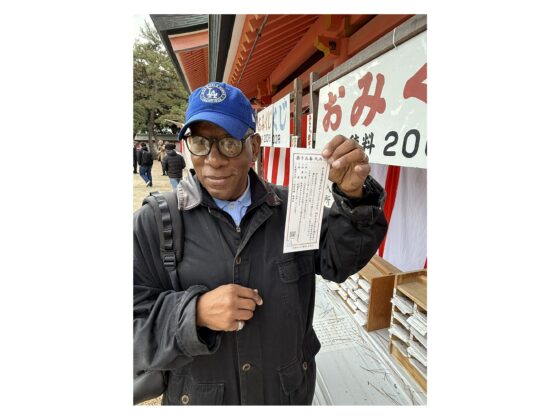December and January often bring a time for reflection … and time for a good read. Several of the Darden School’s Alumni Career Services coaches used the holiday as an opportunity to catch up on a few books from the business genre. Looking for a new book? Read on for both recommendations and warnings.
The Ride of a Lifetime: Lessons Learned From 15 Years as CEO of the Walt Disney Company by Robert Iger.
The Ride of a Lifetime is not a must-read. But if you’re a sucker for a Cinderella story (Cinderella, Disney … see what I did there?), it is an entertaining and enjoyable read worth a few hours of your time. Iger describes in detail his path to and experience as CEO of the Fortune 100 company. He acknowledges both directly and indirectly that there is no road map to the top. There is a tremendous amount of luck involved. But he does provide nuggets of wisdom that are valuable reminders to leaders at all levels. If I had to summarize his advice: First, lead with humility. Iger never assumed he was the smartest person in the room and never underestimated people. Second, lead with empathy, not just for your employees but for everyone you deal with — managers, customers, counterparties and partners. Iger repeatedly demonstrates how truly considering the perspective of others helped him advance and win key negotiations. Lastly, and not unrelated to the first two, you won’t get anywhere without relationships. Iger wasn’t friends with everyone, but he built key relationships that fast-tracked his career.
Reviewed by Jen Coleman
Triggers by Marshall Goldsmith
A renowned executive coach, Goldsmith underscores both the importance of and the difficulty in making behavioral changes that we, as adults, seek to make. He also provides a template to use as we think about and institute changes.
Coaching is fundamentally about change and strengthening our self-awareness in order to make the changes we seek to make. We’ve all heard the mantra that “change is hard,” but Goldsmith helps readers understand exactly why making meaningful behavioral changes as adults is so difficult. He details the role that our own beliefs, environment and behavior play in foiling our efforts to change.
Rather than ending up frustrated by all of the roadblocks that can and do get in our way, readers may find it helpful to understand how much humans are up against in their efforts to move forward. By understanding the magnitude of potential roadblocks, readers are likely to find themselves more sympathetic to others’ frustrations — and their own — as they attempt to make significant behavioral changes.
The reader comes away understanding why making changes is so difficult and learning best practices to implement behavioral changes. Goldsmith urges us to avoid wasting time, stress and conflict by asking ourselves a question at the outset: “Am I willing, at this time, to make the investment required to make a positive difference on this topic?” He also argues for structure as we tackle behavioral change and highlights the role of active questions in facilitating our growth. Finally, he debunks excuses we are prone to make if and when we begin to falter in our efforts.
The book is a great read to kick off the new year. It is ultimately a “no BS” read by one of the world’s preeminent coaches and sets adult readers up for success as we contemplate making significant changes in our career and in our personal lives.
Reviewed by Gwen Mellor Romans (EMBA ’13)
Company of One – Why Staying Small is the Next Big Thing for Business by Paul Jarvis
This book caught my eye because I’ve had so many clients over the years contemplating whether they want a new job at a new company or if they are “ready to go it alone.” I had hoped that the book would focus on the most common company of one we see, freelance consulting, and the challenges that those companies and owners face. However, he makes a distinction early on that freelancing isn’t his definition of a company of one because freelancers “exchange time for money (if they aren’t working, they aren’t getting paid).” Instead, he says a company of one is more about “scaling customer and profit” without “scaling employees or resources,” though he does acknowledge that freelancing can be the first step in becoming a company of one.
This book is a good fit for those who have a big idea and want to run it super lean while reaching for high profits. He says that the company of one model is “start small, define growth and keep learning.” He picks pieces of many successful companies like Southwest, Casper, Seventh Generation to make his points. This book hits all areas at a high level, so I’d recommend it for anyone in the early exploration stage. It wouldn’t provide enough insight for someone already in the throes of running their own company of one.
Reviewed by Lindsay Guthrie (MBA ’04)
Replace Retirement: Living Your Legacy in the Exponential Age by John D. Anderson
It’s easy to become jaded after reading 10-plus books on the topic of retirement careers. Indeed, I found nothing fresh or inspirational in Anderson’s book. I was led to the book after reading the author’s article “3 Drivers to Success in the Second Half of Life” posted on the excellent site Next Avenue. The article, lifted from Section 5 of the book, suggests you should focus on one of three paths in retirement:
- Pursing professional mastery
- Reviving a dream
- Improving the world.
This structure is a good way to think about your time and talent, but how do you figure out your specific approach and plan? His book offers up the “Legacy Map,” which is little more than a series of progressively narrower to-do lists. There’s little to guide readers to find their own unique answers. Worse, the writing is overly peppered with inspirational quotes, celebrity anecdotes and the author’s own preachy quips. The underlying premise is that most retirees simply drift aimlessly through their later years, losing sight of current trends in society, technology and business. I disagree with that assumption. The alumni I’ve coached in retirement are thoughtful, engaged seniors who want effective techniques to help rethink their relationship to work. If you’re considering working in retirement and want some guidance, check out the other books and resources we recommend on our ACS Careers-in-Retirement page. Schedule a free coaching session, and I’ll make specific recommendations given your situation.
Reviewed by Marty Speight (MBA ’96)





